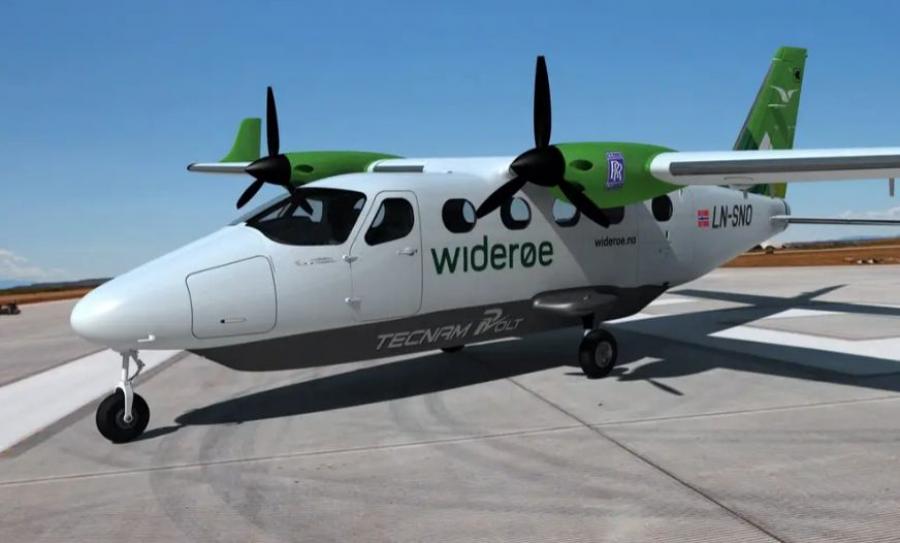Rolls-Royce, Tecnam and Widerøe develop electric passenger airplane
One of the world's most iconic engine manufacturers is shifting its gears to electric planes and just landed a major airline partner.
Rolls-Royce and Italian aircraft manufacturer Tecnam are pressing forward with the P-Volt, an all-electric passenger aircraft, and have added Norway's Widerøe as a partner. The goal is beginning passenger flights in 2026. It's among the first milestones for the nascent aircraft program that was first announced in October 2020.
Each member of the aviation trio will offer its unique skill set to get the P-Volt airborne. Rolls-Royce will focus on propulsion and power systems, Tecnam on design, manufacturing, and certification, and Widerøe will ensure it's ready for airline operations.
The exact specifications of the nine-passenger-seat aircraft are still unknown but the project already has somewhat of a head start since Tecnam has already built the aircraft platform on which the P-Volt is based.
The P2012 Traveller is among the manufacturer's latest aircraft and is currently flying passengers in the US and Seychelles. American commuter carrier Cape Air became the first airline to take delivery of the aircraft in 2019, soon followed by Seychelles' Zil Air.
The P-Volt won't be part of the electric vertical takeoff and land, or eVTOL, revolution as the aircraft cannot fly vertically. Rather, the aircraft is built to takeoff and land on the short runways found throughout Norway's challenging topography, making it a short takeoff and land aircraft, also known as a STOL.
"Norway's extensive network of short take-off and landing airports is ideal for zero-emissions technologies," Stein Nilsen, chief executive officer of Widerøe, said in a statement.
Rolls-Royce isn't new to the world of all-electric aviation and is currently working with Vertical Aerospace to create an eVTOL that can fly up to four passengers around 120 miles at speeds greater than 200 miles per hour. That project will arrive sooner with certification expected for the craft in 2024.
Rolls-Royce and Tecnam have already proved they can work together in this realm, having developed a hybrid light aircraft called the Tecnam P2010. The four-seater aircraft is powered with a combined electric Rolls-Royce motor and standard combustion engine.
The electric-powered P-Volt will be cheaper to operate and quieter than its fossil fuel-powered counterparts, Tecnam says, helping airlines keep costs and noise complaints down. Aerodynamic-friendly wing attachments, commonly known as winglets, that increase the aircraft's efficiency can also be seen in rendering for the P-Volt.
Scandinavia has long battled with its need for air connectivity and the emissions that current-generation aircraft generate. "Flight shame," or "flygskam" in Swedish, is, after all, a Scandinavian movement against the emissions caused by aviation and spearheaded by environmentalists like Greta Thunberg.
Most airlines have turned to next-generation aircraft to help reduce emissions in a temporary solution to the long-term problem. SAS Scandinavian Airlines brought on the Airbus A350-900 XWB and A320neo aircraft while Widerøe was the Scandinavian launch operator of the Embraer E190-E2.
Widerøe's larger goal, however, is to reduce emissions to zero within the next decade as part of a greater aviation sustainability initiative within Norway.
"This aircraft shows how quickly new technology can and will be developed, and that we are on track with our ambition of flying with zero emissions around 2025," Nilsen said.
Thomas Pallini, https://www.businessinsider.com/














